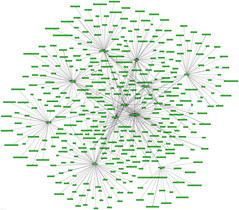Very early in my career I spent ten years working for a national environmental consulting firm in the marketing department. At times the company struggled to maintain success in many varied geographic locations as well as in different specialized professional service sectors. One office or group of engineers would be “bringing home a lot of bacon” — while other groups were desperately trying to bring their billings up to some projected or required (profitable) target and keep their department “fed”.
The marketing department was expected to react quickly to support an ailing office or help facilitate the success of some new business “plan.” We would work late nights for those on the downside of the business cycle — chasing endless, long-shot opportunities.
We also saw a pretty fair amount of “sales professionals” come and go. We listened, a lot, to “at my old firm, we used to…
After a particular volatile business phase, one of the company leaders directed the marketing team to read the book Managing the Professional Services Firm by David Maister. (I will never forget my friend and co-worker’s response — “Really? There’s actually a book on this? And we are going to read and follow it?”) We were all happy to stop running fire drills with minimal success. The book helped us to realize that our job was really to help arm our engineers and scientists with the needed materials to build relationships. In a terrific piece (see http://davidmaister.com/articles/2/89/) Maister writes:
“The traditional marketing (or sales) approach had failed miserably because it took the safe road, presenting capabilities and talking ‘at’ the prospect rather than beginning a conversation that made the other side want to continue the dialogue.”
And so this was where our old “sales” model was flawed. We had been preparing sales people to talk at prospects. Instead, we needed to help make the scientists and engineers who knew about the specific issue feel comfortable and prepared to talk to new prospects. Before, we had been unintentionally pulling the old bait and switch, where one day you meet our project/sales manager at a gathering — and then another day you meet an entirely new person, a person who was a hydrogeologist or mechanical engineer working on your project. What we were forgetting was that when people buy services, they are really buying other people, or as Maister would say, a “relationship.”
Another terrific author on this subject is Jeffrey J. Fox, who wrote How to Become a Rainmaker. His book formed the basis of a “business development guidebook” my old business partner and I helped develop for another firm. The guidebook and Rainmaker were the backbone of a training program designed to help accountants learn how to develop sales leads. Can you think of a more reluctant sales force than a group of accountants? But Fox contends that everyone is a rainmaker, and every contact — in just about every context — can create a business lead. In other words, you can’t be ashamed or afraid of how you meet someone, or what you do for a living, and putting two and two together.
His final contention is also a good one: that successful rainmakers are extensive networkers. When you think of someone who networks well you may think of them chatting extensively at seminars and conferences. But Fox’s networkers actually connect people with other people, in hopes of eventually facilitating business. I think of it as benevolent networking because it’s done without immediate hopes of personal return.
A perfect example of benevolent networking happened today in our office: Pat and I were wondering aloud where to find good cupcakes in Burlington for an upcoming client meeting. Alec mentioned that he had a friend in the cupcake business, indeed with a website, which he quickly provided. His friend has just sold a dozen cupcakes to me, soon to be enjoyed by others representing two additional organizations. Alec is the networker here — he has facilitated the business relationship among two of his contacts.
Jeffrey Fox also points out that effectively networking, and facilitating business relationships, is a long-term approach to business development. As seen in the “cupcake scenario” above, Alec doesn’t directly or immediately benefit from connecting me to his friend’s cupcake business (although he will surely enjoy a confection next week.) Instead, his talented baker friend will certainly return the favor at any opportunity in the future. And his friend’s website is an essential marketing tool.
During our ten-year relationship, my old business partner and I saw the value of relationships every day. Our old friends and colleagues from the environmental firm were our first clients. We were seller/doers — we met with our prospects directly, and then went back to our offices to actually complete the hard work of developing marketing tools, by ourselves. No bait and switch. Once we had our footing, we each cultivated relationships with neighbors, new friends — who in turn became clients. We networked — including some luncheons for sure — but most importantly tried to help others make sound business connections. And it worked. When we needed more work, it was there.
The key to becoming a rainmaker is feeling comfortable with your own networking style – and to feel confident steering prospects and new contacts to all of your marketing materials. My particular career has been focused on writing and developing the marketing tools – largely for professional service firms’ rainmakers. Accuracy, accessibility, and eye-catching design are the ultimate goals in completion of a marketing piece – be it a website, brochure, or case study. When we marketers reach these goals, rainmakers are born.





